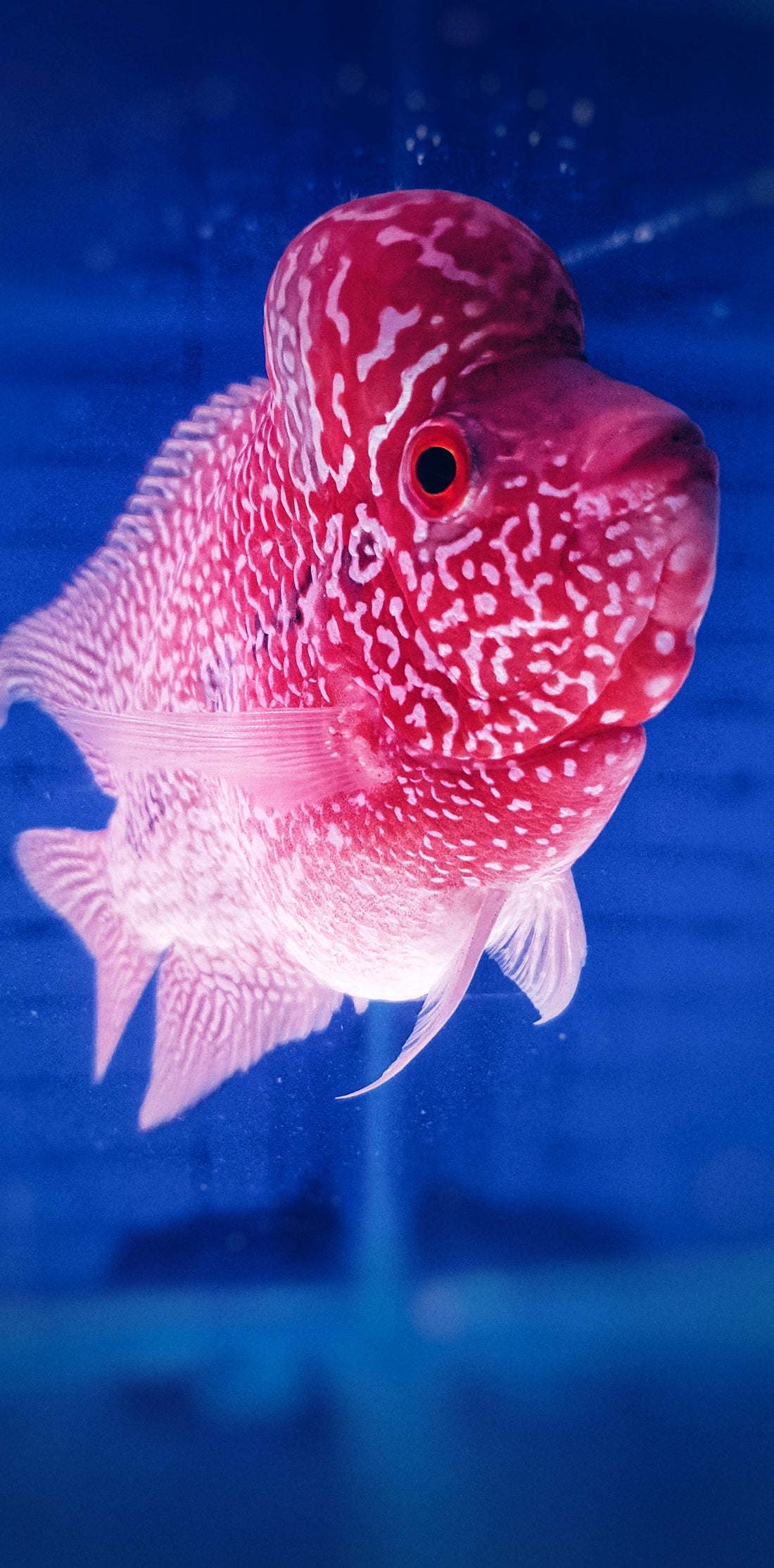
Top 5 FAQs About Flowerhorn F3 Breeding Practices
Share
Flowerhorn cichlids are a fascinating and vibrant addition to any aquarium, known for their striking colors and unique appearance. Among the different generations and varieties, the Flowerhorn F3, Golden Base, Super Red Monkey, and Kamfa F3 Flowerhorn stand out for their distinct qualities. If you're intrigued by Flowerhorn F3 breeding practices, you've come to the right place. Let's dive into five of the most frequently asked questions about breeding these captivating fish.
1. What Is Flowerhorn F3 Breeding?
Flowerhorn F3 breeding refers to the breeding of third-generation Flowerhorn hybrids. Hybridizing various cichlid species, Flowerhorns have gained popularity due to their vibrant colors and pronounced head bumps, known as "kok." F3 generations maintain the most desirable traits from previous generations, offering a balance of beauty and performance in the aquarium.
2. How Do I Choose the Right Breeding Pair?
Selecting the right breeding pair is crucial for success. If you're aiming for a Golden Base or a Super Red Monkey variety, it's essential to choose fish that exhibit these qualities robustly. Observing their colors, patterns, and head shape will guide you in your selection. For those interested in Kamfa F3 Flowerhorns, look for fish with a striking appearance and a strong genetic lineage.
- Live Flowerhorn Fish for those perfect genetics.
- Live Flowerhorn Fish for more options in selection.
3. What Is the Ideal Environment for Breeding Flowerhorn F3?
Creating an optimal environment is key to breeding success. Flowerhorns are relatively hardy, but specific conditions such as pH balance, temperature, and tank size are critical. A stable temperature between 80-85°F and a pH level of around 7.5 will promote health and breeding behaviors in Flowerhorns.
4. How Should I Care for the Fry?
Once you've successfully bred your Flowerhorns, the next step is caring for the Fry. It's vital to offer appropriate nutrition during their growth phases. Live food cultures can be an excellent choice to ensure the young fish get the nutrients they need.
- Consider starting a Live Daphnia Culture to provide a nutritious diet for your growing Fry.
5. How Can I Enhance the Color Development of My Flowerhorns?
The Flowerhorn's vibrant colors are among its most alluring features, and diet plays a crucial role in enhancing these colors. Offering a balanced diet rich in carotenoids and other color-enhancing nutrients is essential. Additionally, maintaining a clean tank environment and minimizing stress can significantly affect color vibrancy.
Flowerhorn F3 breeding can be a thrilling endeavor, yielding beautiful and unique specimens. By understanding these key aspects, you can ensure a successful breeding process.
For more insights into Flowerhorn breeding and to explore a variety of related products, visit LAFAquatic.